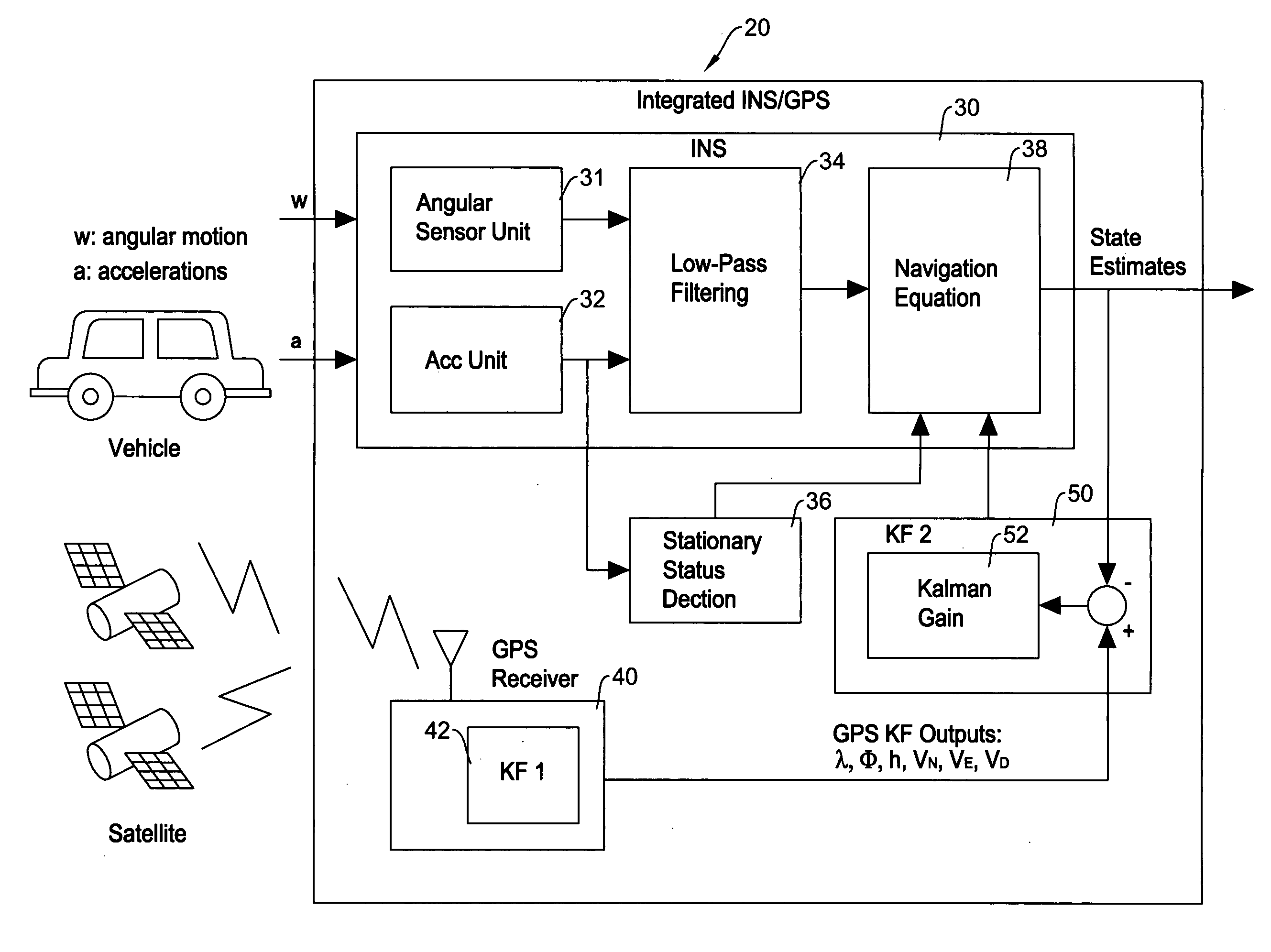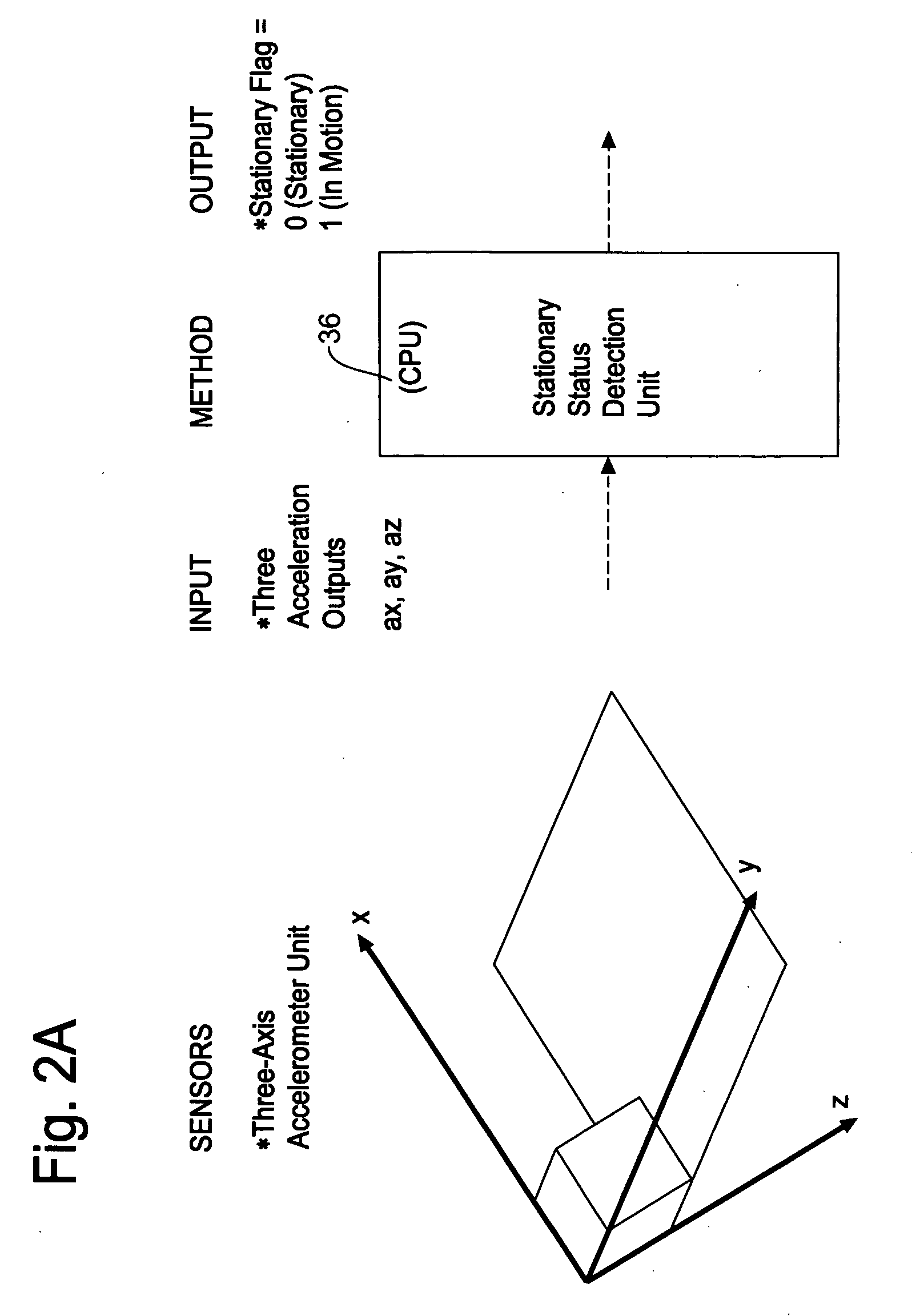Method and apparatus to detect platform stationary status using three-axis accelerometer outputs
a technology of accelerometer and output, which is applied in the field of vehicle and human navigation system, can solve the problems of signal dropout, increased inaccuracy, and inability to provide high accuracy for a long range, and achieve the effect of accurate detection and cost-effectiveness
- Summary
- Abstract
- Description
- Claims
- Application Information
AI Technical Summary
Benefits of technology
Problems solved by technology
Method used
Image
Examples
Embodiment Construction
[0029]The present invention will be described in detail with reference to the accompanying drawings. It should be noted that although a ground vehicle is mainly used in the following description, the present invention can be advantageously implemented to other types of vehicles such as humans, motorcycles, commercial aircraft, etc.
System Architecture
[0030]FIGS. 1A-1C show examples of possible arrangement for three-axis accelerometer sensor units that the present invention is applicable. An example of FIG. 1A is a three-axis accelerometer on the sensor board. An example of FIG. 1B is a combination of a double-axis accelerometer and a single-axis accelerometer formed o the sensor board. An example of FIG. 1C is a combination of three single-axis accelerometers formed o the sensor board. Either of one chipset of three-axis accelerometer, one double-axis accelerometer and one single-axis accelerometer, or three single-axis accelerometers on the sensor board is applicable as long as the ...
PUM
 Login to View More
Login to View More Abstract
Description
Claims
Application Information
 Login to View More
Login to View More - R&D
- Intellectual Property
- Life Sciences
- Materials
- Tech Scout
- Unparalleled Data Quality
- Higher Quality Content
- 60% Fewer Hallucinations
Browse by: Latest US Patents, China's latest patents, Technical Efficacy Thesaurus, Application Domain, Technology Topic, Popular Technical Reports.
© 2025 PatSnap. All rights reserved.Legal|Privacy policy|Modern Slavery Act Transparency Statement|Sitemap|About US| Contact US: help@patsnap.com



